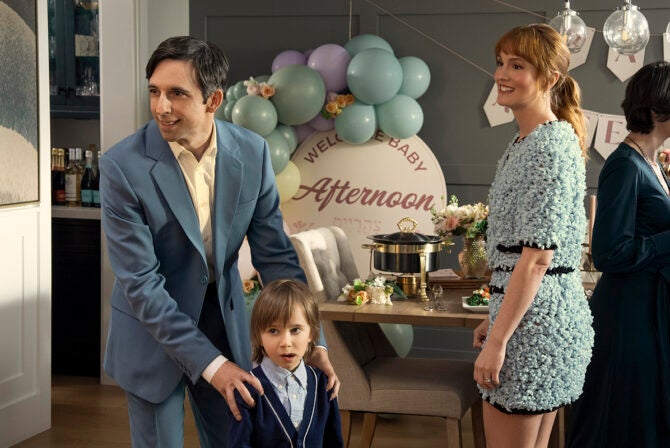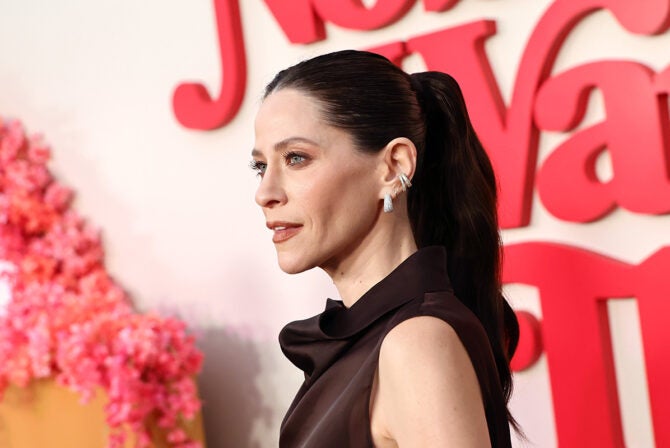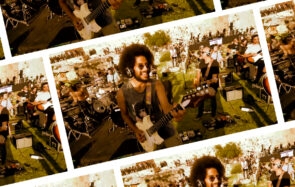Editor’s note: This the conclusion of a two-part series on stillbirth. Read yesterday’s piece here.
I have always known that Jews don’t ritually mourn a miscarriage, a stillbirth or even an infant who dies in the first thirty days of life. I recall my high school Jewish studies teacher offering the following explanation: “It happens so often, we’d be mourning all the time!” At that moment, she introduced a room of hormonal teenagers to the realities of perinatal mortality. She said it matter-of-factly, if not flippantly, with the wave of a hand.
This pragmatic attitude to neonatal death stayed with me and accompanied me through both of my pregnancies. When our doctor confirmed that she could detect no heartbeat, I experienced pain and anguish, but not shock. I knew this could happen.
This caution is reflected in most cultures that have a historical memory longer than a few decades. Alice Pung has eloquently written of the intricate Chinese practices around pregnancy, childbirth and postnatal care, all of which bring an acute caution and awareness of the fragility of life to the experience of making babies. A Hindu practice known as Simmanantannaya involves the wearing of red or green glass bangles from month seven of gestation. The sound of these bangles is believed to reach the womb and comfort the fetus. The focus of pregnancy is to pray for the well-being of that baby.
While these cultures have always known that the business of life-making is perilous, our own modern Western culture does not envision that conception can end in death. We expect to come home with a live and healthy baby nine months after a positive pregnancy test, to a nursery we have lavishly prepared, filled with clothing and other goodies received during joyous baby showers. ‘Mommy blogs’ and commercial parenting websites (usually associated with multimillion-dollar industries) flood us with articles about great diets for babies, design tips for nurseries and what we can expect when we are expecting with respect to first kicks, first smiles, first rolls…
I think that most pregnant women understand deep down that the pregnancy could end badly, but that concern is drowned out by the hype around “10 Great Nursery Designs Using Pantone’s Color of the Year” or “7 Celebrity Baby Names for your Next Baby,” which creates an impression that bringing home a healthy baby is a certainty.
Why has modern culture departed from the acknowledgment that pregnancy, if achieved at all, does not always result in happy endings? Where is the space to acknowledge this before pregnancy? How did we become so complacent to believe that with the help of science and technology we can guarantee an escape from this horrible, but natural, outcome?
Holding in our imaginations the possibility of death as an outcome of pregnancy need not be morbid. It has the potential to illuminate the miracle that is life, and to feel immense gratitude not only when we deliver a living child, but in our every living moment. Judaism, and most other cultures, can bring into focus the joy that is life by keeping alive our awareness of death.
There is another powerful voice framing the conversation around pregnancy and childbirth in dominant western culture. This is the natural birth movement, which advocates minimal medical intervention and promises that if women just trust in the wisdom of their bodies and nature, rather than ‘bossy and meddling’ doctors and midwives with their ‘drugs, needles and other butchery’, everything will be just fine. This voice also ignores the reality that creating a life can end in death. I have met so many women who felt like failures because they needed (lifesaving) interventions like C-sections and episiotomies or who relied on pain relief medication.
But this is not what the business of life-making is about. The business of life-making is about the miracle of the human body, often aided by the miracle of modern medicine, in slowly turning a single cell into a being. It’s a miracle because there are so many points along the way that that process could be hindered or not realized at all.
It’s about the political implications of turning our bodies into vessels attempting to create life, and the choices (or lack thereof) that we have with respect to this process. It’s about the social impact of entering motherhood, and how governments and communities empower–or fail to empower–women to continue to contribute to society in a way that is in the best interests of those women and their families throughout and after pregnancy.
It’s about the many paths to becoming a parent. Perhaps you deployed the miracle of science due to social, biological or medical limitations. Perhaps it was unplanned or a surprise. Perhaps you are helping to create that life for other parents through surrogacy. Perhaps this pregnancy is a result of a tragedy like rape, and you must make sense of loving somebody whose origins lie in such a painful place. Perhaps you have just met that being who will be your child–one that you did not carry or birth, but whom you will adopt and adore with a love that has no boundaries. Perhaps you have decided not to have children, but engage in the business of life-making in other ways through your work, your art and your relationships.
The business of life-making can also be about the endless grief, anger and emptiness that comes from struggling with fertility challenges, be they social or biological, as well as regret and/or acceptance.
Most importantly, the business of life-making is about building a family–a project that involves joy, grief, conflict, love, vulnerability, humility and endless learning.
I decided not to look at the body I delivered. I did not feel the need to hold the baby, or to dress her to say goodbye. For me, the visceral experience of laboring and birthing her provided me with a tangible way to honor her and say goodbye. For this, I felt incredibly privileged. Birth was my ritual. I helped her pass out of my womb–her home for 27 weeks–to be returned to the earth. It is at this point that I felt incredibly grateful for the innovations in public health, modern medicine and psychology that enabled this. Thanks to medical innovations, I could be induced to deliver the day after I learned that the baby died, rather than walking around with a dead baby in my womb for weeks until my body naturally delivered (if at all). My doctor gave me hormones that diminished my breast milk before labour started. By the time I delivered, I had no breast milk left, so I did not have to face the horrific task of disposing of liters of my milk, something many women who delivered stillborn babies before me had to do.
I did not take up the offer to see, hold and dress the baby, or even to keep the memory box created by the hospital. But I am grateful for the innovations in modern psychology and public health, which have lead to the recognition of the need to encourage women and men with stillborn babies to find a way to grieve and say goodbye that is most therapeutic to them. I felt no judgment and only kindness from the hospital staff. Historically women have been forced to move on quickly after losing a pregnancy, stillbirth or infant, and the loss of a child carried stigma or attracted blame. Modern approaches and perinatal death organizations like SANDS encourage people to talk about their loss and recognize that grief can unfold over a long period of time. I never felt that I didn’t have a right to be sad.
At 12:30 p.m. on Friday the 10th of February we buried the body. We followed traditional Jewish practice by burying her in a white shroud, at the Jewish cemetery’s section designated for stillborn babies and infants. As is customary, there was no ceremony. No prayers were said, but the body was treated with respect and dignity as it was gently placed in the earth.
Now that the baby’s body is underground, I am beginning to develop a slightly fuller sense of how to understand this being. At 27 weeks, that baby was a part of me. She was a part of my biology and the mechanics of my internal functioning. She was the subject of my love and care, just as the other parts of my body are the subject of my love and care. Now that part of me has died, and is buried in a cemetery on the edge of Melbourne. Eventually, the rest of me will die, and join that part that has already been returned to the earth.
The business of life-making should be seen on the life-death continuum. Just as pain is an integral part of love, and grief is an integral part of joy, death is an integral part of life.
Can a greater awareness of the possibility of death in the process of creating life take us to a place of gratitude? Can it help us see that every one of us is a living, breathing miracle? This experience of having lost what would have been my next child has brought into focus the miracle that is my three-year-old son to such a degree of intensity that it penetrates my every bone. Surely it can lead me to be more patient and more present with him–not to sweat the small stuff, not to worry about the minutiae of his reaching developmental goals, if he finishes everything in his lunchbox, or if he sleeps through the night. Surely my stillborn is leading me to a place where I can be a better parent, a better family member and better human being.
There is a lot more grieving to do. In losing this baby, I have lost the potential to love and parent the child that would have been born from this pregnancy. This pregnancy did not bring my son a little sister, as we had wanted. The pain of lost potential will remain a presence in our lives.
I chose not to attend the burial. My partner attended. Instead, I decided to collect my son, my living miracle, from kindergarten. It was his first full week and it had been unsettling. My son and I slowly walked home from kindergarten, admiring the trucks on the nearby building site. Then we had lunch, read a story, and I put him to bed for his nap. As I closed the bedroom door, it became clear that this was precisely where I needed to be: With my precious, living child.
The author wishes to thank Liora Miller and Jewish Women of Words for the support in publishing this series. Read part 1 here.







